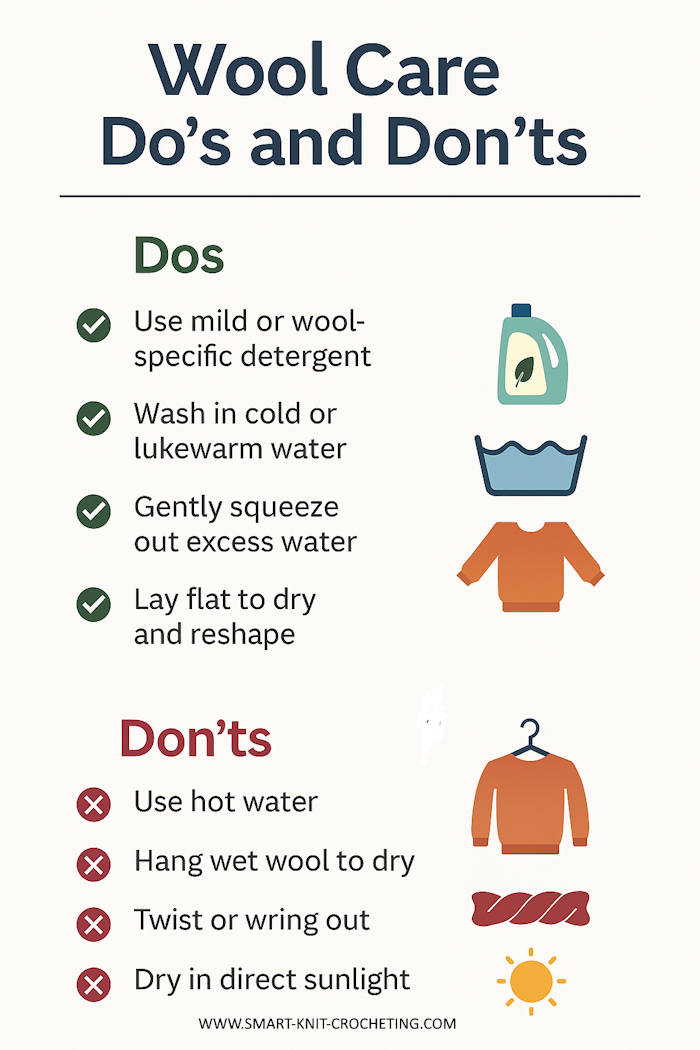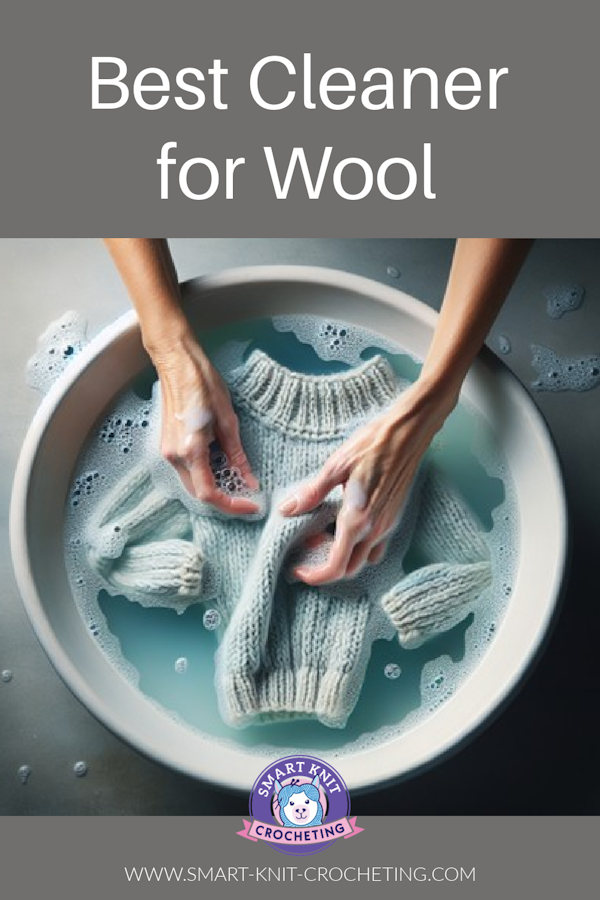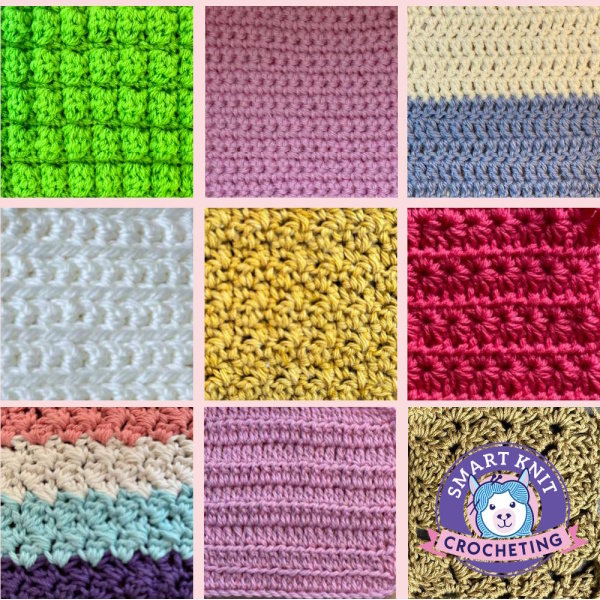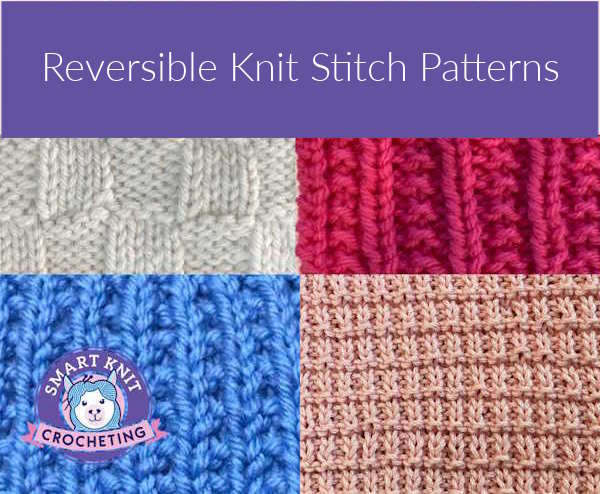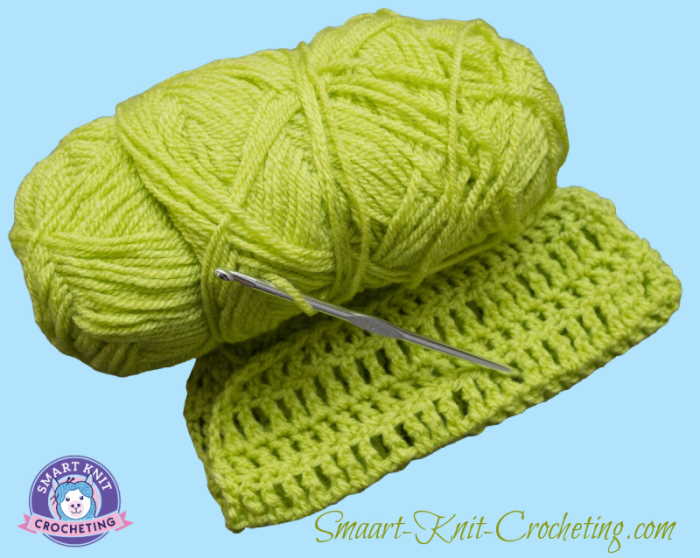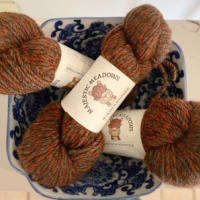- Home
- Best Cleaner For Wool
The Best Cleaner For Wool
Best Cleaner for Wool by Janice Jones
If you have been knitting or crocheting for a while, you might have fallen in love with wool. It’s easy to work with, blocks beautifully, and is available in every imaginable color and yarn weight. It’s also sustainable, can serve as a natural UV protectant, and is non-flammable.
However, wool is a natural fiber that requires a bit more care.
Using the wrong detergent can cause your favorite sweater to shrink, felt, or become ruined. The good news? You don’t need fancy products to keep wool clean—sometimes a mild shampoo is all that's required.
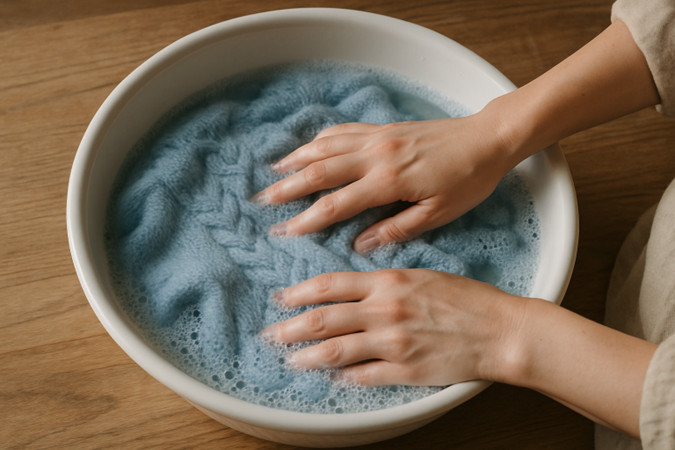 The Best Cleaner for Wool
The Best Cleaner for WoolBut there are also excellent wool-specific detergents that make the job easier. This guide walks you through the best cleaners, step-by-step washing instructions, and tips to keep your wool garments looking brand new.
I learned about yarn differences decades ago when I first tried to wash my first wool sweater. Somehow, it got buried in a pile of laundry that I threw into my washing machine and dryer without even thinking about it.
Boy, was I devastated when I realized that the sweater that I had worked on for so long was totally ruined, felted, and shrunk about five sizes. Over the years, I have learned how to take care of everything I make. Here is what I learned.
What Makes a Cleaner Wool-Safe?
Not every detergent is safe for wool. The best cleaners are:
- pH-neutral (not too acidic or alkaline)
- Free from bleach or enzymes (enzymes eat protein fibers like wool)
- Gentle on fibers so they don’t strip away natural oils
- Low-suds, so rinsing is easy
If you’re ever unsure, check the label for “wool safe” or “delicates.”
The Best Cleaners for Wool
You can wash wool with everyday products like shampoo, or upgrade to dedicated wool detergents. Here are the most popular options: Click on the links below to check the price on Amazon.
| Cleaner | Best For | Price Range | Pros | Cons | Examples |
|---|---|---|---|---|---|
| Mild Shampoo | Everyday handwashing | $ | Cheap, easy to find, gentle | Can leave fragrance, not wool-specific | Johnson’s Baby Shampoo, Aveeno Baby Gentle Wash & Shampoo, Cetaphil Baby Wash |
| Baby Shampoo | Soft knits, scarves, baby clothes | $ | Extra gentle, lightly scented | Not designed for deep cleaning | Mustela Gentle Baby Shampoo |
| Castile Soap | Natural option | $ | Plant-based, biodegradable | Needs thorough rinsing | Dr. Bronner’s Pure Castile Soap |
| Eucalan Wool Wash | Sweaters, shawls, lace | $$ | No-rinse, lanolin enriched | Slightly higher price | Eucalan Lavender, Unscented |
| Soak Wash | https://amzn.to/46vpRY3Delicate knits | $$ | No-rinse, light scents | Not always available locally | Soak Celebration, Soak Fig |
| Woolite Delicates | General wool & silk | $ | Widely available | Some versions are scented | Woolite Delicates (Original) |
| The Laundress Wool & Cashmere Shampoo | High-end woolens | $$$ | Luxurious, pH-balanced | Pricey | The Laundress Wool & Cashmere Shampoo |
Can You Use Dog Shampoo to Wash Wool?
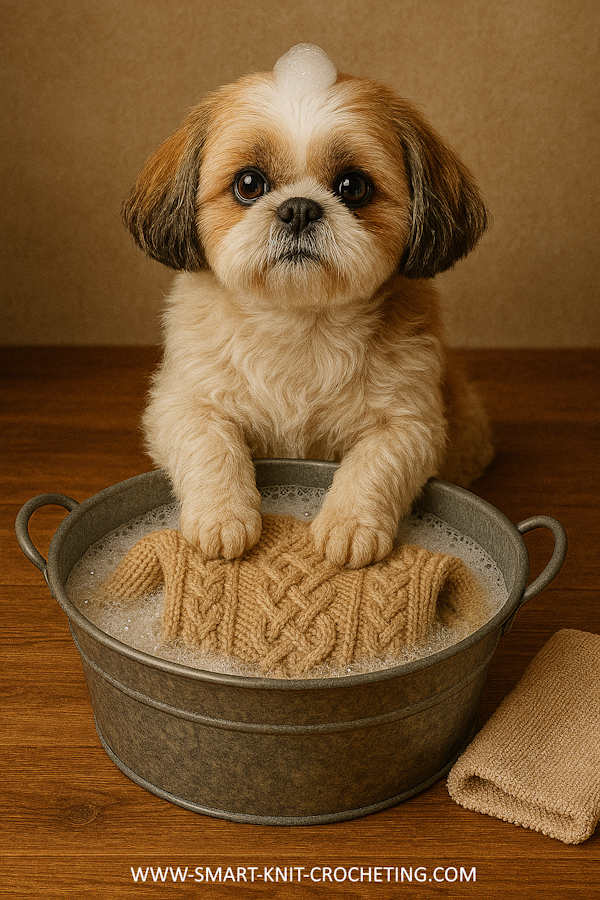 The Best Cleaner for Wool May Not Be Dog Shampoo
The Best Cleaner for Wool May Not Be Dog ShampooDog shampoo is designed to clean fur, which, like wool, is a protein fiber. That means in theory, a very mild dog shampoo can clean wool safely. However, there are a few important cautions:
- Formulation varies: Some dog shampoos contain flea/tick medications, strong fragrances, or conditioning agents that may leave residue or damage delicate wool fibers.
- pH levels differ: Wool does best with cleaners that are pH-neutral (around 7). Some dog shampoos are not pH-balanced.
- Residue risk: Many pet shampoos are designed to leave behind coat conditioners. On wool, this can cause fibers to become sticky and attract dirt.
Types of Wool & Care Differences
We often lump all wools into one category, but when it comes to washing, we should look at the different popular types of wool for our knit or crochet garments.
- Merino Wool → finer, softer, often superwash (machine washable).
- Superwash Wool → chemically treated to resist felting, but still needs gentle detergents.
- Cashmere & Alpaca → even more delicate, often hand-wash only.
- Blends (wool + acrylic, wool + silk) → may tolerate more machine washing.
The Craft Yarn Council provides symbols and laundering instructions for various types of yarn. Here are a couple of examples:
 Washing
Washing Drying
DryingStep-by-Step: How to Wash Wool Safely
Follow these steps to clean wool without shrinking or felting:
- Fill a basin with cold or lukewarm water (never hot). “According to the Woolmark Company, wool should always be washed in cool water with a mild detergent to prevent shrinkage.”
- Add detergent: Approximately one teaspoon of wool wash or a mild shampoo. Mix gently.
- Submerge the garment, swish gently, and let it soak 15–20 minutes. Avoid vigorous rubbing.
- Rinse in clean water (at the same temperature as the wash water). Repeat 2–3 times until the water runs clear.
- Remove excess water by rolling the garment in a clean towel and pressing gently. Never wring dry.
- Lay flat to dry on a towel or mesh drying rack. Reshape to original size.
Optional: Use the spin cycle only on your washing machine for 1 minute after rinsing. This speeds drying without twisting.
Drying & Reshaping Wool Garments
- Always lay flat to dry—never hang.
- Reshape carefully while damp.
- Keep away from direct sunlight or heat sources (they can damage fibers).
- For sweaters, dry on a mesh screen so air circulates underneath.
Spot-Cleaning & Stain Removal Guide
Sometimes it is easier to spot clean if needed rather than laundering the entire garment. Wool fibers are delicate, so stains need gentle treatment. Here’s how to handle the most common ones:
- Food or Oil Stains
Sprinkle cornstarch, talcum powder, or baking soda over the spot. Let it sit overnight to absorb oils, then brush off before washing. - Wine or Coffee
Blot immediately with a clean cloth (don’t rub). Rinse with cold water, then dab with a mild wool-safe detergent solution. - Mud
Let the mud dry completely. Brush off the dried dirt, then wash as usual. - Ink
Dab gently with rubbing alcohol or vinegar on a cotton swab (test in a hidden spot first). Rinse, then wash. - Blood
Always use cold water only, as warm or hot water will set the stain permanently. - Blot (don’t rub) with a clean, damp cloth.
- Soak the area in cold water with a small amount of wool-safe detergent or mild shampoo.
- If needed, apply a paste of baking soda + cold water, let sit for 15 minutes, then rinse thoroughly.
- Repeat the soaking process if necessary, then proceed with a thorough wash.
Is It OK to Hang Wool Sweaters?
No: you should not hang wool sweaters.
Here’s why:
- Stretching: Wool fibers are elastic and will slowly stretch under their own weight. When you hang a sweater, gravity pulls on the damp or dry fibers, causing the shoulders and body to sag.
- Permanent misshaping: Once stretched out, wool often won’t bounce back fully, leaving you with “hanger bumps” in the shoulders or a sweater that looks longer and thinner.
- Drying damage: If you hang wool to dry after washing, the extra water weight makes stretching much worse.
The Right Way to Store & Dry Wool Sweaters
- After washing, roll the item in a towel to remove excess water, then lay it flat to dry on a clean towel or a mesh drying rack. Reshape gently while damp.
- For storage, fold sweaters instead of hanging them.
- Store in breathable cotton bags or bins to keep moths away.
- Add lavender sachets or cedar blocks to deter pests.
Wool Care Mistakes to Avoid
Even with the right cleaner, wool can be ruined by a few common missteps. Avoid these mistakes to keep your knits soft, shapely, and beautiful:
- Hanging Wool Sweaters: Hanging causes wool fibers to stretch under their own weight, leaving sweaters long, saggy, or with “hanger bumps. Instead, always fold wool sweaters and lay them flat to dry.
- Using Hot Water: Sudden temperature changes (hot wash → cold rinse) shock wool fibers, causing felting and shrinkage. Instead, stick to cold or lukewarm water for both washing and rinsing.
- Too Much Detergent: Using extra soap doesn’t make wool cleaner; it leaves a sticky residue that attracts dirt. Instead, use a teaspoon or a capful of wool wash or a mild shampoo.
- Wringing or twisting: Squeezing wool too hard stretches and damages fibers. Instead, gently press out water by rolling garments in a towel.
- Skipping Rinses: Leftover detergent makes wool dull, itchy, and stiff. Instead, rinse thoroughly 2–3 times until the water runs clear.
- Drying in Sunlight or Heat: Direct sun or heat sources can fade colors and weaken fibers. Instead, dry indoors on a flat surface, away from radiators or bright windows.
Best Cleaner for Wool
Can
I wash wool in the washing machine?
Can
I wash wool in the washing machine?
Yes, but only if your machine has a “wool” or “delicate” cycle. Otherwise, handwashing is safer.
What temperature should I use?
What temperature should I use?
Cold or lukewarm (under 30°C / 86°F). Hot water will shrink and felt wool.
Is vinegar safe for wool?
Is vinegar safe for wool?
A splash of white vinegar in the rinse can help neutralize odors, but be cautious not to use too much, as it can weaken fibers if overused.
What happens if I use regular detergent?
What happens if I use regular detergent?
Most laundry detergents contain enzymes or bleach, which can damage wool. Stick with gentle, wool-safe cleaners.
Best Cleaner for Wool: Pin for Future Reference
Final Tips & Recommendations
- For everyday knits, a small amount of shampoo works perfectly.
- For heirloom pieces or luxury yarns, invest in a wool-specific detergent, such as Eucalan or Soak.
- Wash less, air more—wool is naturally odor-resistant.
- Always dry flat and reshape for best results.
By using the right cleaner and gentle washing method, your wool garments can last for decades—soft, beautiful, and free from shrinkage.
For more information and downloadable fact sheets, visit the American Wool Website.
